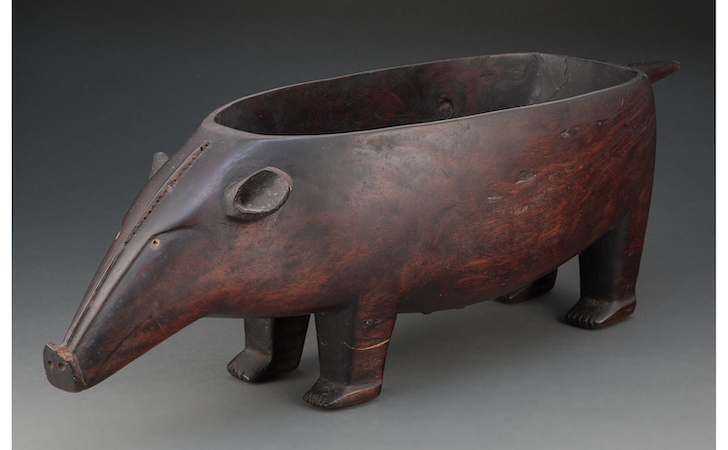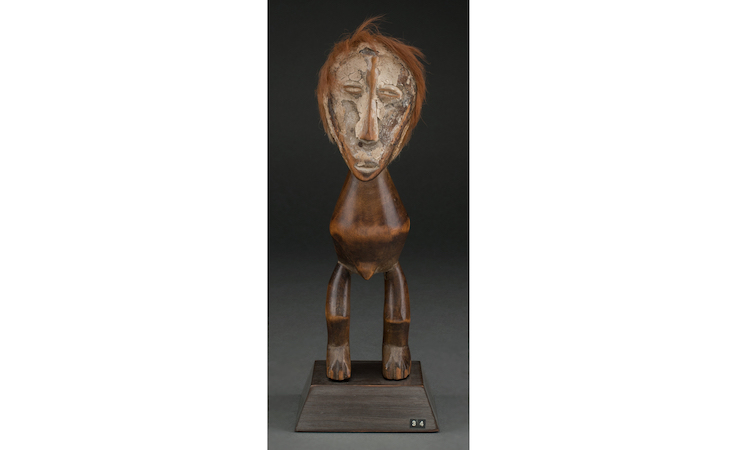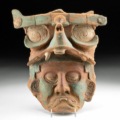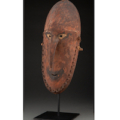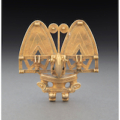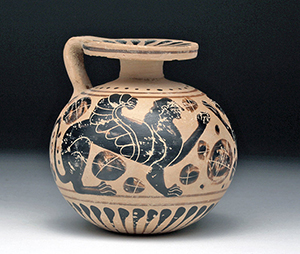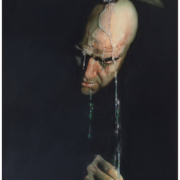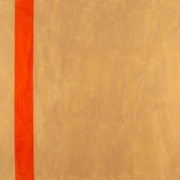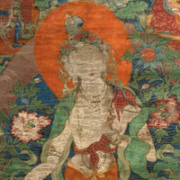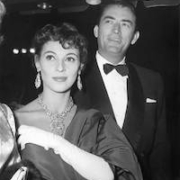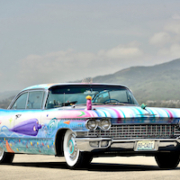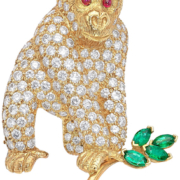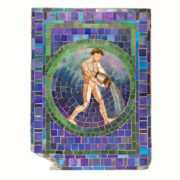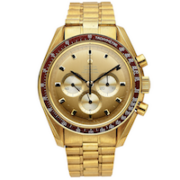Strong ethnographic art lineup at Heritage, June 2
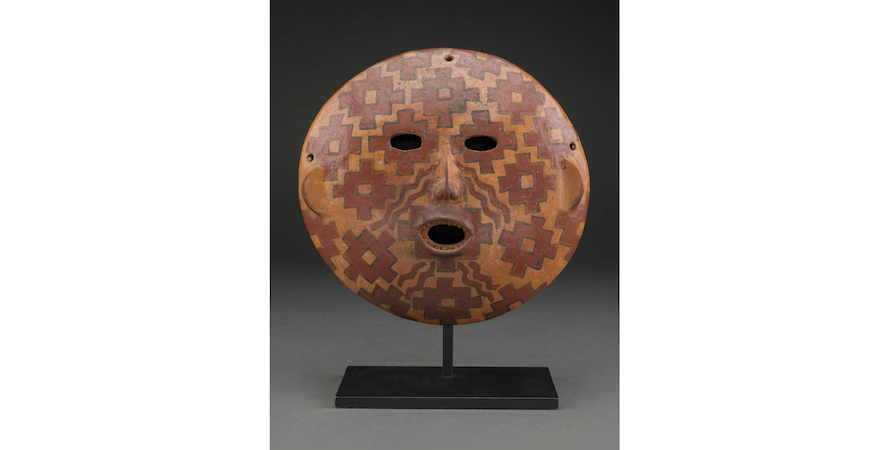
Pre-Columbian Chupicuaro mask, estimated at $20,000-$30,000. Image courtesy of Heritage Auctions, ha.com
DALLAS — On Friday, June 2, Heritage Auctions presents an auction packed with gorgeous and historic objects that veteran and new collectors will appreciate as slices of our collective human and regional past. The house’s Ethnographic Art: American Indian, Pre-Columbian and Tribal Signature ® Auction is shaped by a strong selection of North American Indian jewelry, pottery and weavings, Pre-Columbian gold and jade and African and Oceanic ceremonial and utilitarian objects. Absentee and Internet live bidding will be available through LiveAuctioneers.
A Pre-Columbian highlight is a Chupicuaro mask from the late pre-Classic period (300 B.C.-300 A.D.) out of Guanajuato, Mexico. This buffware work with excellent provenance has the traditional ancient Chupicuaro cross- or step-fret designs characteristic of their large figures and masks, though this one has unique zigzag lines from the bridge of the nose down to the cheek areas, and similar lines from the lower lip down the chin. It is in excellent condition with no apparent repairs or restoration, and it is estimated at $20,000-$30,000.
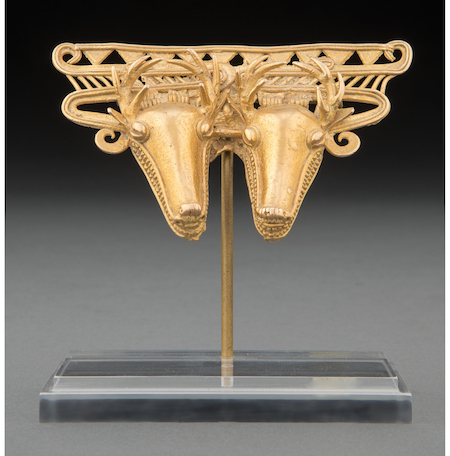
Cocle (Macaracas) gold deer head pendant, estimated at $10,000-$15,000. Image courtesy of Heritage Auctions, ha.com
Pre-Columbian gold is another strength in this event, and an evolving strong suit for Heritage. Of special interest is a Cocle (Macaracas) gold pendant of deer heads, via Panama, dating to 700-1400 A.D. and estimated at $10,000-$15,000. The heavy casting of gold alloy (tumbaga) with a high gold and silver content depicts two antlered deer heads surmounted by highly stylized crested crocodile heads in profile.
A Maya jade pendant with an estimate of $8,000-$12,000 is another highlight. The circa 600-800 A.D. piece from Mesoamerica is in excellent condition. Made of semi-translucent apple-green jade, finely carved and grooved, it depicts a standing deity or person of nobility with a large face with the crossed eyes of the ancient Maya solar deity Kinich Ahau at its center, crowned by a headdress.
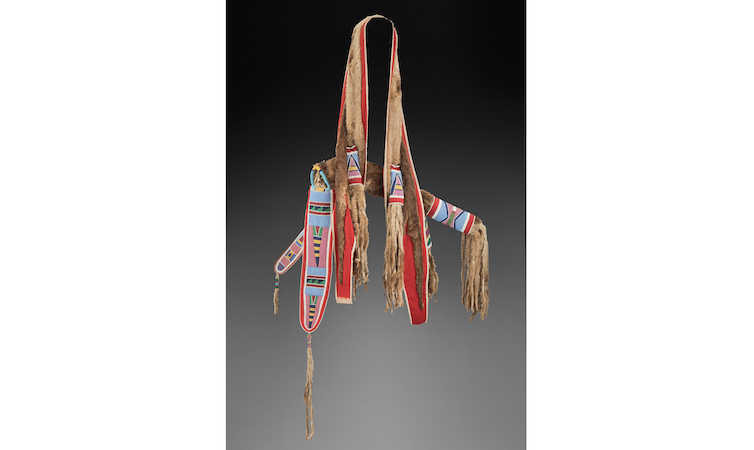
Circa-1880 Crow/Nez Perce otter skin bow case and quiver, estimated at $35,000-$55,000. Image courtesy of Heritage Auctions, ha.com
Some of the most significant lots in this event are American Indian pieces, including a circa-1880 Crow/Nez Perce otter skin bow case and quiver that has an estimate of $35,000-$55,000. In a letter dated February 8, 1984, Bill Holm, acclaimed curator of the Burke Museum in Seattle, writes about his familiarity with this bowcase and quiver and provides his opinion that it was made from two different bowcase-quiver sets before it left Indian hands. He considered it a very fine example, among the most complete sets known to him.
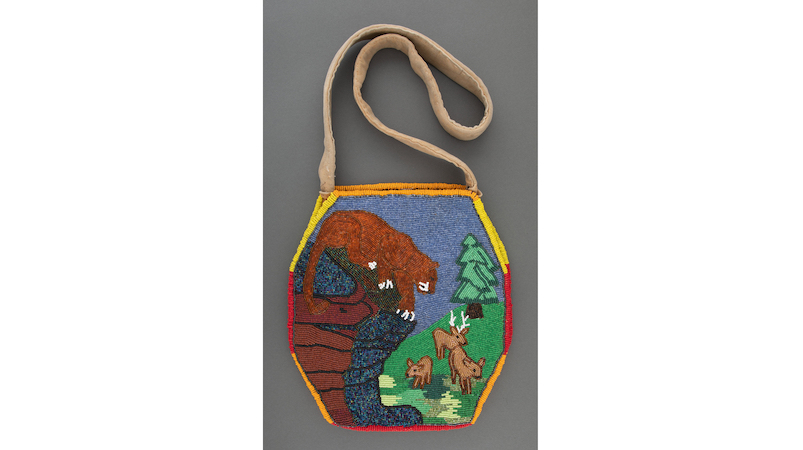
Circa-1970 Yakima beaded hide flat bag by Cecelia Totus, estimated at $800-$1,200. Image courtesy of Heritage Auctions, ha.com
Another American Indian highlight is a charismatic circa-1970 Yakima beaded hide flat bag made by Cecelia Totus and showing a wily cougar stalking a herd of grazing deer. Totus’ work often depicts cougars, and she signs her work with a single black bead against a solid ground of a different color; on this bag, the single black bead is visible against the clear beaded ground above the pansy at the top right. The bag has an estimate of $800-$1,200.
Choices in the tribal category include an impressive late 19th- to early 20th-century Santa Cruz Islands feast bowl from the Solomon Islands. Only three of these are known: one in a museum in New Zealand, one in a museum in Australia, and this one. This large and heavy bowl in the shape of a female pig was made for feasts and were part of a chief’s treasury. The example in the June 2 sale is estimated at $20,000-$30,000, is carved from a dense hardwood and has a dark brown to black patina from extensive use.
Another gem in this section is a circa-1900 Lega figure from the Democratic Republic of Congo, which has an estimate of $15,000-$25,000 and an excellent provenance. This figure was given to a member of the Lega men’s age group (Bwami) upon the completion of an initiation. Its face is covered with white kaolin and some animal hide at the top for hair; its head projects out from the body a little and is tilted slightly to the left, making for an animated and dynamic figure.
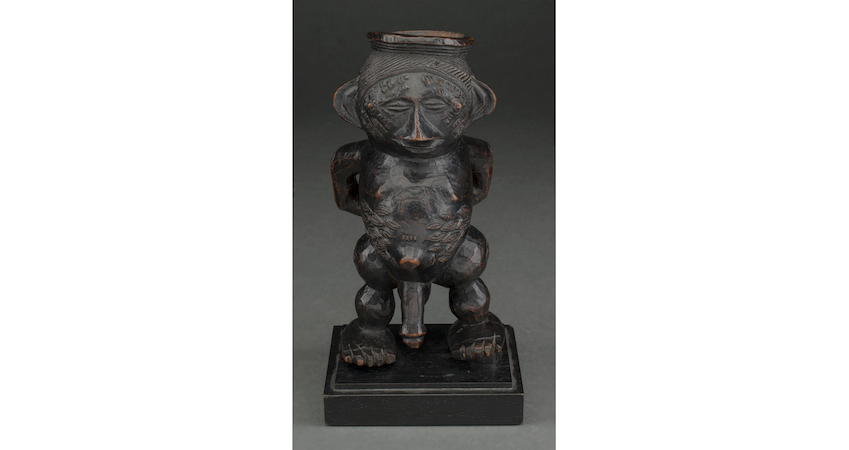
Kuba Wongo ceremonial drinking cup, estimated at $10,000-$15,000. Image courtesy of Heritage Auctions, ha.com
It is joined in this event by another work from the Democratic Republic of Congo that dates to the mid-19th century: a Kuba Wongo ceremonial drinking cup, estimated at $10,000-$15,000. This is an extraordinary carved wood portrait of a naked Kuba Wongo ancestor — a statesman or chief — his potent fertility and authority represented by his protruding belly and large phallus. He holds his hands behind his back, which both emphasizes his physique and shows his restraint and patience in dealing with others. He has traditional scarification marks on his belly, thighs, upper arms, the nape of his neck, and over most of his face, indicating his status and rise to prominence through age-grade initiation rites.
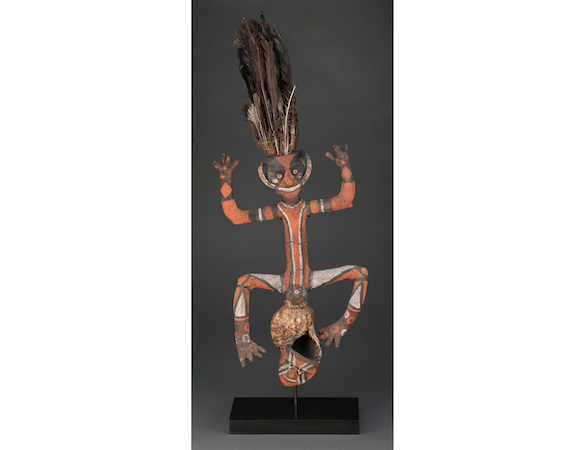
Malakula ceremonial puppet, estimated at $10,000-$15,000. Image courtesy of Heritage Auctions, ha.com
Rounding out the highlights is an early 20th-century Malakula ceremonial puppet from Vanuatu. Handheld puppets would mysteriously appear from behind fenced-in enclosures during initiation ceremonies. This puppet’s fernwood body and limbs are expressionistically painted with orange, black and white natural earth pigments, and a pair of boar tusks extend up from the corners of his mouth. Embedded in his crown is a headdress of feathers from chickens and other domestic birds. A painted earthenware miniature mask is attached to the bottom of the shell. The puppet is estimated at $10,000-$15,000.
Click to view top auction results on LiveAuctioneers: https://www.liveauctioneers.com/pages/recent-auction-sales/



